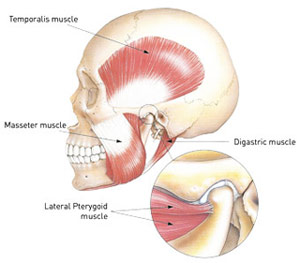The plank pose is a powerful core strengthener that you can do anywhere. The core muscles include the abdominals, the back, and pelvic muscles.

You can get into this pose either from a downward dog or from lying face down on your belly and pushing yourself up. The body should be in one line from the top of your head to your heels. Your shoulders should be at a 90 degree angle with your arms straight (but not hyper-extended) and your wrists directly under your shoulders. Make sure that your hands are flat and totally engaged with the floor and your fingers spread. Press your outer arms inward while firmly placing the bases of your index fingers into the floor. Contract your shoulder blades against your back and then spread them away from your spine. Spread your collarbones away from your sternum at the same time.
Push back through your heels and forward through a neutral neck out through the top of the head. Your head should be a natural extension of the spine. Do not dip or raise your hips. Legs should be strong, straight and engaged. Press the front of your thighs up towards the ceiling, but resist your tailbone to the floor as you lengthen it. Lift the base of the skull away from the back of the neck and look straight down at the floor. Your heels should point straight up to the sky, and your feet should be square.
Breathe. Hold for 30 seconds to 1 minute.



 Our jaws. We use them to eat with. We use them when we talk and to move our faces for expression. We often clench them when we’re stressed, or working hard, or often without even knowing it. Many of us even clench them in our sleep.
Our jaws. We use them to eat with. We use them when we talk and to move our faces for expression. We often clench them when we’re stressed, or working hard, or often without even knowing it. Many of us even clench them in our sleep. Press your fist softly against one side of the jaw, between the TMJ and the chin. Push slowly toward opposite side, taking up all of the slack. Hold for 15 seconds. Repeat on other side.
Press your fist softly against one side of the jaw, between the TMJ and the chin. Push slowly toward opposite side, taking up all of the slack. Hold for 15 seconds. Repeat on other side.
